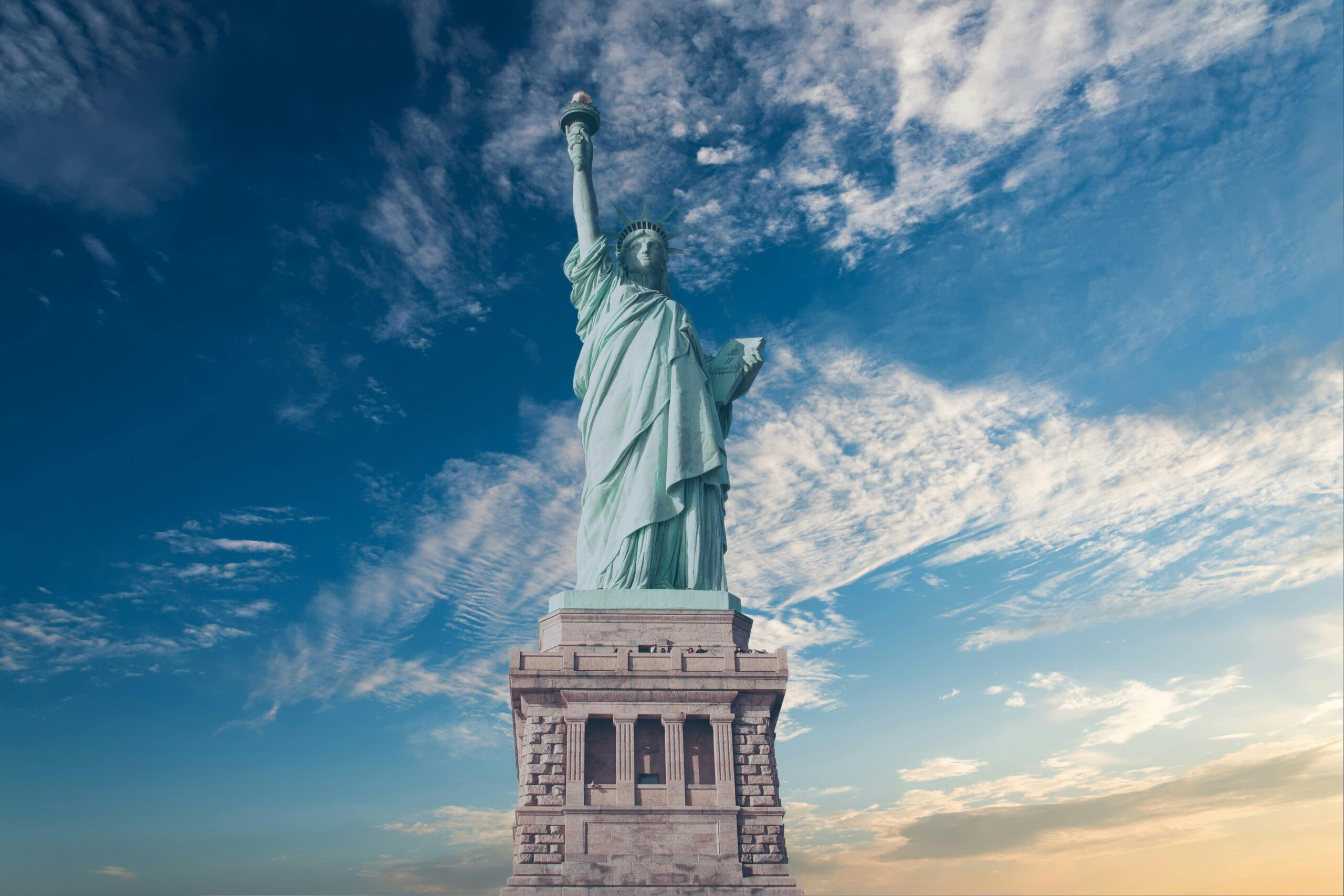French Politician Demands America Returns The Statue Of Liberty After 140 Years Old

The Statue of Liberty has stood for nearly 140 years as a towering beacon of hope, freedom, and Franco-American friendship. But now, a firestorm is brewing—not over what she represents, but who deserves to keep her. A French politician has stirred controversy by demanding her return, claiming that the U.S. has strayed too far from the values Lady Liberty was meant to embody. The statement lit up headlines, sparked fierce political rebuttals, and reignited debates on symbolism, alliances, and global identity. What started as a bold remark may have exposed deeper rifts than anyone expected.
Who Is Raphael Glucksmann—and Why Is He Angry?
Raphaël Glucksmann isn’t exactly a household name in the United States, but in France, he’s a rising voice among progressive circles—and not one to pull punches. A member of the European Parliament and co-founder of the Place Publique party, Glucksmann is known for blending emotional rhetoric with policy critique, often channeling public frustration into pointed political statements. His latest target? The United States.
Glucksmann’s recent remarks came at a convention for his party, where he accused America of betraying the very ideals the Statue of Liberty was meant to represent. With rising concern over President Donald Trump’s policies—ranging from cuts to scientific research to cozying up with authoritarian figures—Glucksmann argued that the U.S. has shifted away from freedom, progress, and democracy. For him, Lady Liberty has become an uncomfortable contradiction: a gift meant to celebrate liberty, now standing in a country he believes is turning its back on it.
But Glucksmann’s criticism goes beyond symbolism. He zeroed in on the treatment of researchers and intellectuals, warning that firing scientific minds in the name of politics is not just short-sighted, it’s dangerous. His fiery call to “give us back the Statue of Liberty” wasn’t a literal demand—more like a cultural wake-up call, a dramatic appeal to reexamine what liberty really means when the institutions meant to protect it seem under siege.
A French Dream Turned American Icon

Long before she became a selfie magnet in New York Harbor, Lady Liberty was a French idea—born from idealism, frustration, and a shared belief in freedom. The year was 1865, and French political thinker Édouard de Laboulaye floated the idea of a monumental gift to the United States. His proposal wasn’t just about honoring American independence; it was a subtle critique of his own country’s authoritarian leanings. France, at the time, was wrestling with its identity, and Laboulaye saw America as a symbol of what democracy could look like.
Sculptor Frédéric Auguste Bartholdi took on the project, creating the colossal figure we now know—crowned with seven rays, torch in hand, and feet breaking free from chains. The French financed the statue itself; the Americans agreed to build the pedestal. After some delays (including a war and a good deal of fundraising), the statue finally arrived in New York in 1885—packed in 350 pieces—and was unveiled the following year.
Since then, she’s stood as a welcoming figure for millions, a symbol of hope for immigrants, and a cultural icon of the so-called “American dream.” But she’s also something more: a reminder that liberty, as an ideal, was meant to be shared across borders. In fact, a smaller sister statue still stands in Paris, quietly reflecting the same light from across the Atlantic.
The Speech Heard Around the Internet
This jackass, France’s MEP, wants the US to return the Statue of Liberty 🗽.
— Juanita Broaddrick (@atensnut) March 17, 2025
He thinks we no longer deserve to have it! Who wants to tell him to GF himself? pic.twitter.com/nN8AWMDZWo
When Raphaël Glucksmann took the stage at his party’s convention, he probably knew his words would make waves. What he might not have expected was just how far those waves would travel—or how quickly they’d crash into headlines around the world. With the fervor of a man both frustrated and theatrical, Glucksmann declared that the United States had lost its way, accusing it of siding with tyrants, silencing scientists, and abandoning the values the Statue of Liberty was meant to represent.
“Give us back the Statue of Liberty,” he proclaimed, not with a smirk, but with the seriousness of someone issuing a moral indictment. The room erupted in applause. In an era where outrage often gets more airtime than nuance, Glucksmann’s remarks hit all the right emotional chords: nostalgia, indignation, and the kind of righteous idealism that pairs perfectly with a soundbite.
Within hours, the speech was dissected, memed, and debated online. Some praised him as a voice of conscience; others dismissed him as a political opportunist lobbing symbolic grenades. But regardless of where people stood, one thing was clear: Glucksmann had forced a global audience to pay attention—not just to his words, but to what the Statue of Liberty represents in a world that feels increasingly uncertain about its values.
History as a Weapon

If Glucksmann’s speech was designed to provoke, the White House’s response made sure it delivered. When a reporter brought up the “Statue of Liberty situation” during a press briefing, White House Press Secretary Karoline Leavitt didn’t miss a beat. Her answer? A masterclass in historical mic-dropping. “Absolutely not,” she snapped when asked if the U.S. would consider sending the statue back. Then came the punchline: “It’s only because of the United States of America that the French aren’t speaking German right now.”
It was the kind of retort that’s made for headlines—patriotic, combative, and drenched in wartime nostalgia. The reference to World War II, where U.S. troops helped liberate France from Nazi occupation, was no accident. It framed Glucksmann not as a concerned ally, but as an ungrateful gadfly biting the hand that once helped feed freedom to his homeland.
But as satisfying as the line might’ve been to certain audiences, it also sidestepped the larger critique. Rather than engaging with the heart of Glucksmann’s argument—about scientific freedom, democratic values, and moral leadership—the response reduced the debate to a transactional history lesson. A sort of, “We saved you once, so sit this one out.”
In doing so, the White House turned the Statue of Liberty into a rhetorical trophy, using past victories to deflect present criticisms. It was history as a shield, wielded not to reflect but to deflect.
What’s Really at Stake

Glucksmann’s outrage may have sounded dramatic, but it tapped into a genuine European unease. From transatlantic trade disputes to climate inaction, and from scientific censorship to wavering support for Ukraine, the values that once united allies are now being contested. His callout wasn’t just about Trump; it was about what his leadership seemed to signal to the rest of the world: a retreat from openness, cooperation, and evidence-based governance.
For France—and much of Europe—the symbolism of the Statue of Liberty cuts both ways. It’s a monument to shared ideals, yes, but also a mirror. When those ideals feel compromised, the reflection becomes uncomfortable. Glucksmann’s call to “take her back” was less a logistical demand and more an emotional line in the sand: a reminder that symbols don’t live in isolation. They evolve—or erode—based on the actions of those who claim to uphold them.
Could France Really Reclaim Lady Liberty?

Let’s get one thing out of the way: No, Lady Liberty isn’t going anywhere. While the idea of France reclaiming the Statue of Liberty makes for juicy headlines and viral outrage, the actual logistics are far less cinematic. The statue, officially gifted to the United States in 1885 and erected a year later, is not on loan—it’s U.S. government property. And according to UNESCO, which designated it a World Heritage site, it’s staying right where it is.
Even Glucksmann himself later admitted that he wasn’t calling for a literal retrieval. His dramatic plea was meant as a metaphorical wake-up call—a way to jolt the public into questioning whether the U.S. still represents the values enshrined in the statue’s message. Still, that hasn’t stopped the internet from running wild with the idea, from mock shipping labels marked “Return to Sender” to memes of the statue mid-stride across the Atlantic.
Legally speaking, there’s no process for revoking a 140-year-old gift, especially one that has become an indelible part of America’s cultural and historical identity. The pedestal was funded by Americans, the location is sovereign U.S. territory, and any diplomatic attempt to reverse the gesture would almost certainly collapse under the weight of its own absurdity.
So, no: France won’t be backing a boat up to Liberty Island anytime soon. But as symbolic power plays go, Glucksmann’s rhetorical lob served its purpose—it got the world talking.
What Liberty Represents Now
French MEP Raphaël Glucksmann suggests that the U.S. return the Statue of Liberty:
“We’re going to say to the Americans who have chosen to side with the tyrants: ‘Give [it back.] We gave it to you as a gift, but apparently you despise it. So it will be just fine here at home.” pic.twitter.com/5Lxg69nWKj
— Pop Base (@PopBase) March 17, 2025
Once a towering emblem of transatlantic unity and shared democratic ideals, the Statue of Liberty now finds herself caught in a cultural tug-of-war—not just between France and the U.S., but within the U.S. itself. For generations, she represented hope to immigrants arriving by boat, a promise of freedom etched into bronze. But symbols age, and their meanings evolve—or fracture—with the societies that surround them.
Today, that glow is more complicated. In an America grappling with political polarization, debates over immigration, restrictions on science, and shifting foreign allegiances, the question isn’t just whether the country still lives up to Lady Liberty’s ideals—it’s whether it even agrees on what those ideals are. Is liberty the freedom to speak, to dissent, to research without interference? Or is it now viewed through the lens of isolationism, control, and selective belonging?
Meanwhile, across the ocean, Europe watches. For many, the U.S. has long served as both partner and moral compass. But as American leadership turns inward and rhetoric heats up, figures like Glucksmann are asking: if the torchbearer stumbles, who picks up the flame?
The crisis isn’t about the statue—it’s about the stories we tell ourselves about who we are, and the uncomfortable reality that those stories don’t always match the headlines. Lady Liberty may still stand tall, but her symbolism feels shakier than ever.
Torchbearers of the Future
In the end, no one is boxing up the Statue of Liberty. She’s not going anywhere. But what this transatlantic spat revealed is that symbols like Lady Liberty aren’t static—they’re mirrors. And lately, that mirror has been reflecting a fractured image of the ideals she was meant to stand for.
Raphaël Glucksmann’s demand may have been theatrical, but it forced a bigger question into the spotlight: Who gets to claim the moral weight of liberty when the actions of a nation no longer align with its symbols? The U.S. may still own the statue, but the values she represents—openness, courage, compassion—belong to no single country. They have to be lived, not just displayed.
So maybe the goal isn’t to send the statue back across the Atlantic. Maybe the real challenge is to make sure she still belongs here—not legally, but philosophically. Because liberty, like democracy, isn’t a gift you receive. It’s a promise you keep.
Loading...

